Chai Tea and Chai Lattes are both warm, spicy, and delicious drinks but with their own distinct tastes and textures. If you are unsure of the difference, this article may be able to help!
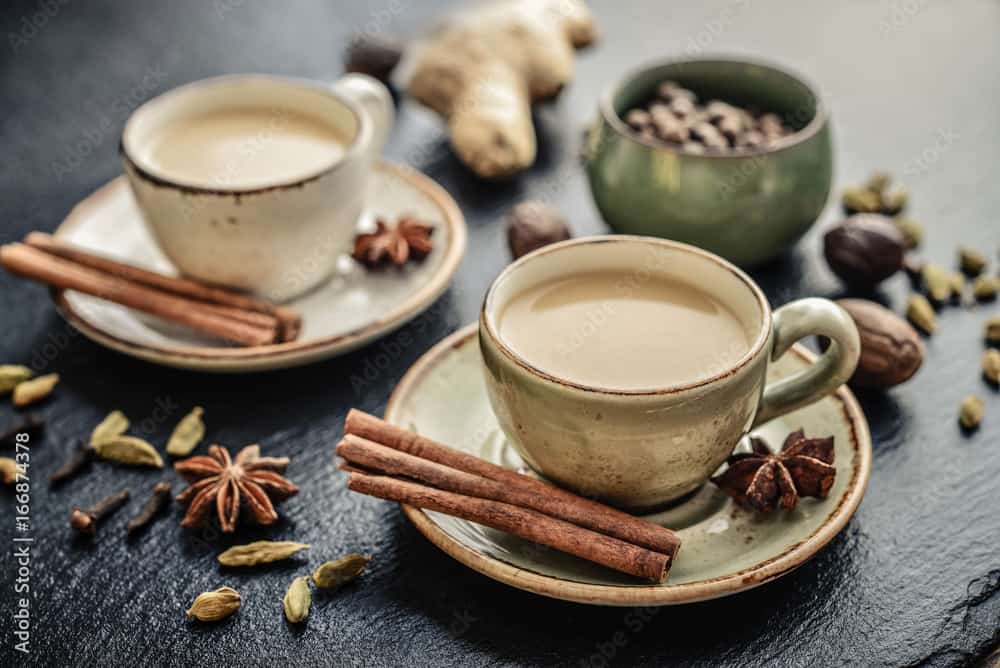
Chai tea has been served in India for thousands of years, but this popular drink with a beautiful blend of spices and tea is now popular with tea enthusiasts in coffee shops around the world. As it has spread, it has been transformed into many different drinks and treats.
This diversity is a blessing and a curse. It’s great when you want the flavor of chai in a creamy, dreamy drink, but it’s a problem when you don’t know how to order exactly what you are craving.
Knowing the difference between Chai Tea and a Chai Tea Latte is a great place to start to truly determine your personal preference. Both offer the delicious, spiced flavor of chai but one is much sweeter and creamier while the other is stronger in flavor.
What is Chai Tea?
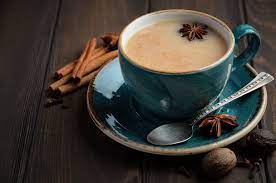
Chai Tea is a loose-leaf black tea spiced with cinnamon, ginger, cardamom, cloves, and black pepper. It is usually served with a splash of milk and honey or sugar.
The exact recipe for Chai Tea varies from one region to the next. In India, where tea was born, it is usually called masala chai. “Chai” is the Hindi word for “tea” and “masala” translates to “spice”. So “masala chai” literally translates to “spiced tea”.
Traditional masala chai was first created as a healing beverage for the royal court of the Indian subcontinent. Originally, it didn’t contain any tea. The spices alone were steeped together to create a drink that was flavorful and shared far and wide for its healing abilities.
Each region would add its own spices to add to the flavor and the health benefits. Ginger was a popular remedy to help with digestion. Cinnamon was thought to improve respiratory function. Cardamom was included to elevate your mood and cloves were a natural pain reliever. Together the spices were flavorful and thought to help fight off diseases and discomfort.
As the drink developed over thousands of years the blend of black tea was added along with milk and honey. The tea and milk may have been added by the British who really started and grew the tea industry in India to compete with Chinese tea production. The British were fans of a strong black tea, sweetened with milk and sugar. Most of the black tea produced today comes from certain regions in India.
You can find Chai Tea bags for sale in many grocery stores in addition to loose leaves. A cup of Chai Tea is perfect to warm you up on a cold day and also fight off infections during changing seasons.
What is Chai Latte?
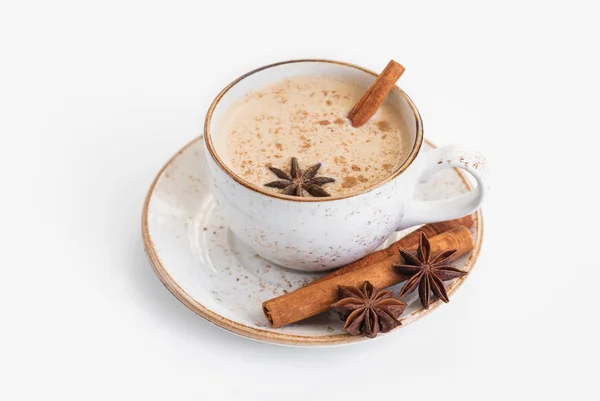
A Chai Latte contains many of the same spices as Chai Tea but rather than being brewed in hot water and having milk added, a Chai Latte is often brewed directly in warm milk or it has a high milk ratio in the drink. This is the primary difference between the two.
The exact history of the Chai Latte is not clear. It may have been created because tea is expensive and adding milk and sugar can help stretch the flavor further. It may also have been created to be more appealing to a Western palate as it has a very lovely creamy texture.
Despite having “latte” in the name, a Chai Latte does not have any coffee in it. “Latte” is the Italian word for “milk”. It is usually used to describe an espresso drink with foam, but in this case Chai Latte translates to milk tea (Check out this Japanese Milk Tea Recipe too!).
A lot of Chai Lattes are made with a syrup or drink mix that has the flavor of chai but may not be freshly steeped.
Spices Used in Chai Drinks
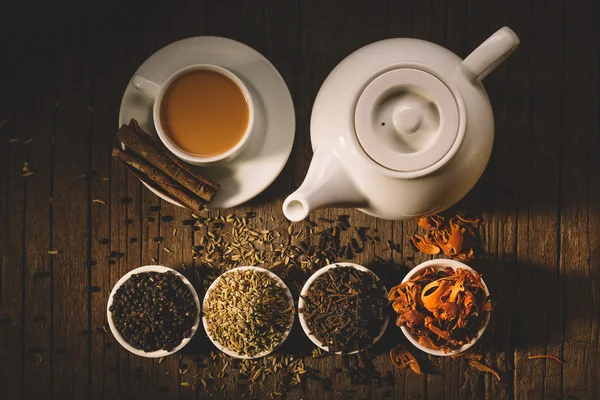
There is no set recipe for chai and the exact spices may vary from one region to the next but there are a set of whole spices that have become essential for creating the perfect chai drink. You’ll find these spices in both Chai Tea and Chai Lattes.
Chai Spices
- Cinnamon: Cinnamon is a popular spice for warm, comforting drinks and chai definitely falls in that category. It pairs perfectly with the rest of the spices to bring them all together.
- Cloves: Cloves are also popular in spiced drinks and help enhance the flavor of cinnamon. Cloves are high in antioxidants and have antibacterial and anti-inflammatory properties.
- Cardamom: Cardamom pods have a slightly earthy flavor that blends well with cinnamon and cloves. It’s also thought to lower blood pressure and improve breathing.
- Fresh Ginger: Fresh ginger root is slightly spicy. It’s good for digestion and can help reduce nausea.
- Black Peppercorns: Black pepper is a slightly surprising ingredient, but it provides the perfect balance to the sweetness of the other spices. It’s also good for your metabolism and bone health.
- Star Anise: This spice is not included in all versions of Chai Tea, but it is great for fighting off infections and may also ease menopause symptoms.
The Difference
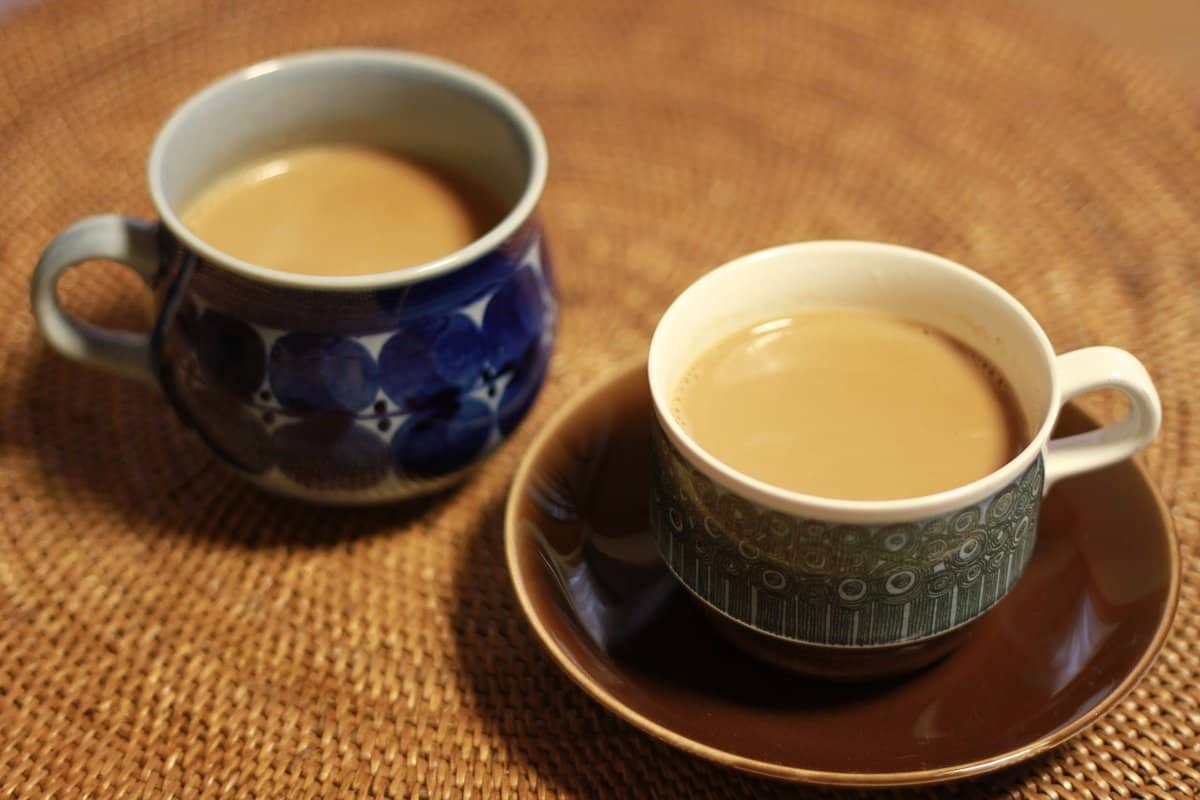
There is no set recipe for spices or tea that is considered exclusively chai. You may find different variations of Chai Tea and Chai Lattes depending on the coffee shop you visit.
The main difference between the two is the amount of milk it contains. Chai tea can be made with no milk at all or it may be equal parts milk and tea. Chai lattes typically have a much higher ratio of milk. Milk may make up half the drink or even three quarters of it.
This high milk content makes Chai Latte significantly sweeter than a Chai Tea.
Appearance
Because Chai Tea has less milk than Chai Lattes, it is much darker in color. It typically comes out a dark or light brown color with some creamy appearance to it.
Chai lattes are much lighter and may even have a golden tint to them. They also have a significant layer of foam at the top of the drink thanks to a milk frother.
Taste
If you like a stronger tea flavor, then Chai Tea may be a good option for you. It has plenty of warm spices and tea, with just a hint of cream.
Chai lattes call for less tea in the recipe. The tea is then stretched with the addition of whole milk. This makes the spiced flavor a bit more subtle, hidden in depths of milky cream.
Because a Chai Latte’s flavor is not as strong, many people like to add coffee or boba to it for an even richer treat. Chai latte with coffee or a shot of espresso is usually referred to as a dirty Chai Latte.
FAQs
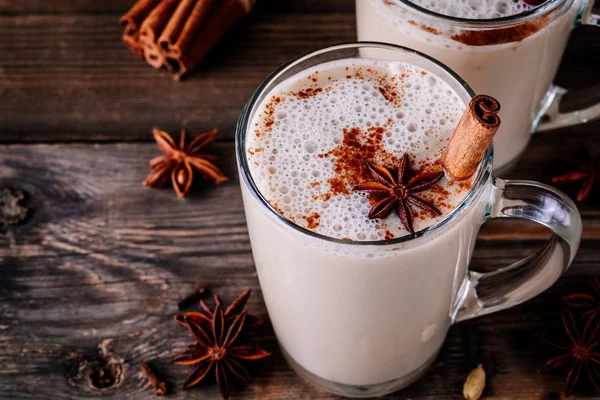
Chai Tea and Green Tea are both touted for their health benefits. Both are made with tea leaves, but green tea leaves are relatively unprocessed. Chai Tea is made with black tea leaves which have been fermented and oxidized. What sets Chai Tea apart from other black teas is the addition of warm, flavorful spices.
Chai Tea is usually made with black tea leaves which do have some natural caffeine.
Chai Tea has about half as much caffeine content as a cup of coffee but still more than a cup of green tea.
You can find decaffeinated Chai Tea for sale in many shops, for those who want to cut out some amount of caffeine. A Chai Latte would also have less caffeine because of its high milk content.
In general Chai Tea is gluten free, but because there is no set recipe for what counts as chai, it is always important to check if you have a gluten sensitivity. Use caution if you order a Chai Latte from a coffee shop. Many shops like to use oat milk in their chai drinks and not all oat milk is gluten free.
Chai Tea on its own is considered vegan. If you add milk to it, be sure and choose a milk and sweetener that fits your diet.
Chai Lattes are not vegan unless specified. They usually contain cow’s milk and many chai concentrates also contain honey. If you are ordering in a shop, ask the barista if they use a premade mixture. You will want to see the ingredients in the chai so you can ensure no honey is used as a sweetener.
The milk in a Chai Latte can easily be substituted for a vegan option and still be just as tasty. Oat milk, almond milk and soy milk are all popular options, but it would also be delicious with coconut milk.
A vegan Chai Latte is easy to create at home. Simply steep a bag of Chai Tea in hot plant-based milk and sweeten with brown sugar or maple syrup.
Traditional Chai Tea was brewed for its health benefits as part of ayurvedic medicine, a system of traditional medicine that is practiced in India. The first creators of Chai Tea combined all the most powerful and flavorful spices they could find to help fight off infections, lower blood pressure and increase blood flow.
Modern Chai Tea is served mostly for the flavor, but it may still help improve digestion, improve heart health, help with weight loss, fight off infections, boost your immunity, improve teeth and skin, and also boost your mood. There are few things more comforting than a cup of tea full of vitamins and delicious spices.
If improving your health is your goal it’s probably a good idea to opt for a Chai Tea rather than a Chai Latte. Chai Lattes contain much more milk which will mean a greater amount of fat. Chai Lattes are also often made with syrup or pre-made mixes that make it difficult to customize the amount of sweetness and sugar added to the drink.





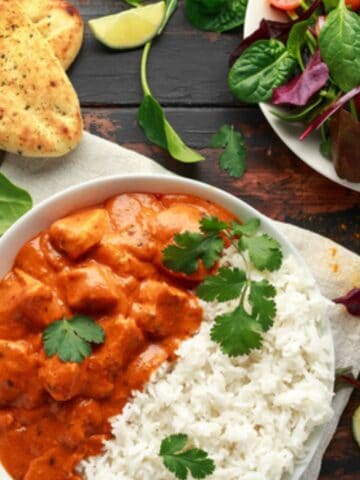
Leave a Reply